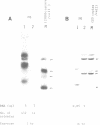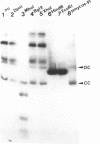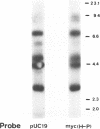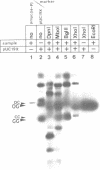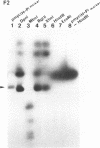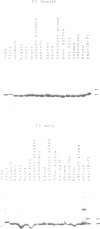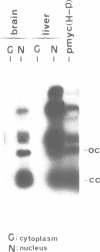Abstract
The c-myc protein has recently been shown to interact with a region possessing putative origin of DNA replication and enhancer activities located 2 kb upstream of the c-myc gene itself. Transgenic mice were obtained by injecting constructs containing this region, termed pmyc(H-P), into fertilized mouse eggs. The transgenic elements were capable of efficient replication in all mouse tissues examined and were maintained in an episomal state even in highly differentiated cells. Moreover, pmyc(H-P) was transmittable to the progeny throughout several generations, which suggests that the fragment derived from the region upstream of the c-myc gene possesses sequences necessary for partition, stability and DNA replication of the plasmid in the cells. In addition, we have shown that the plasmid might be captured only by eggs, not by sperm.
Full text
PDF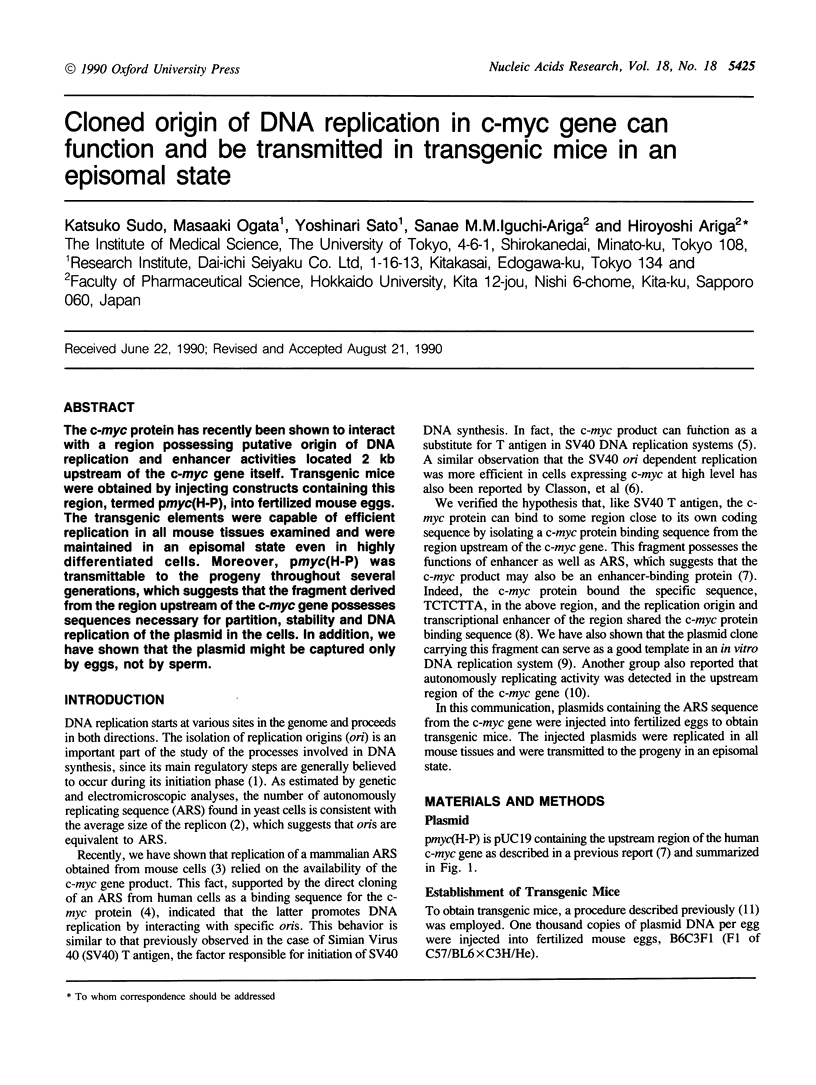
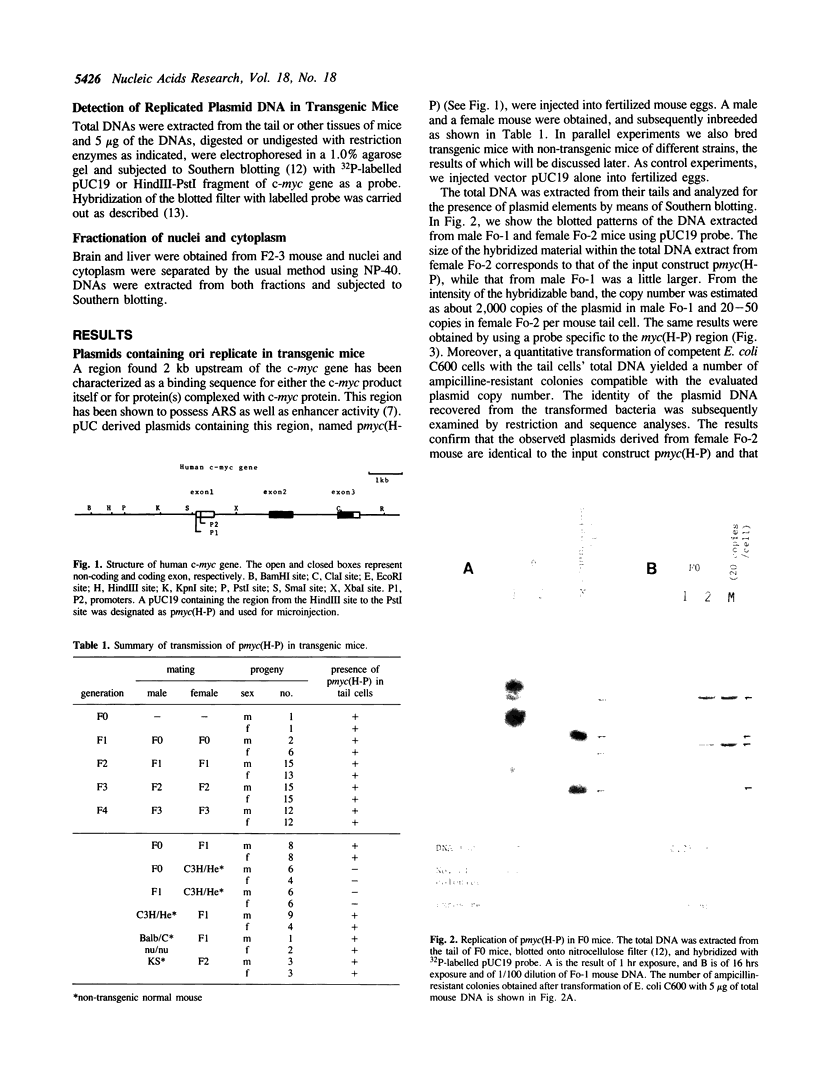
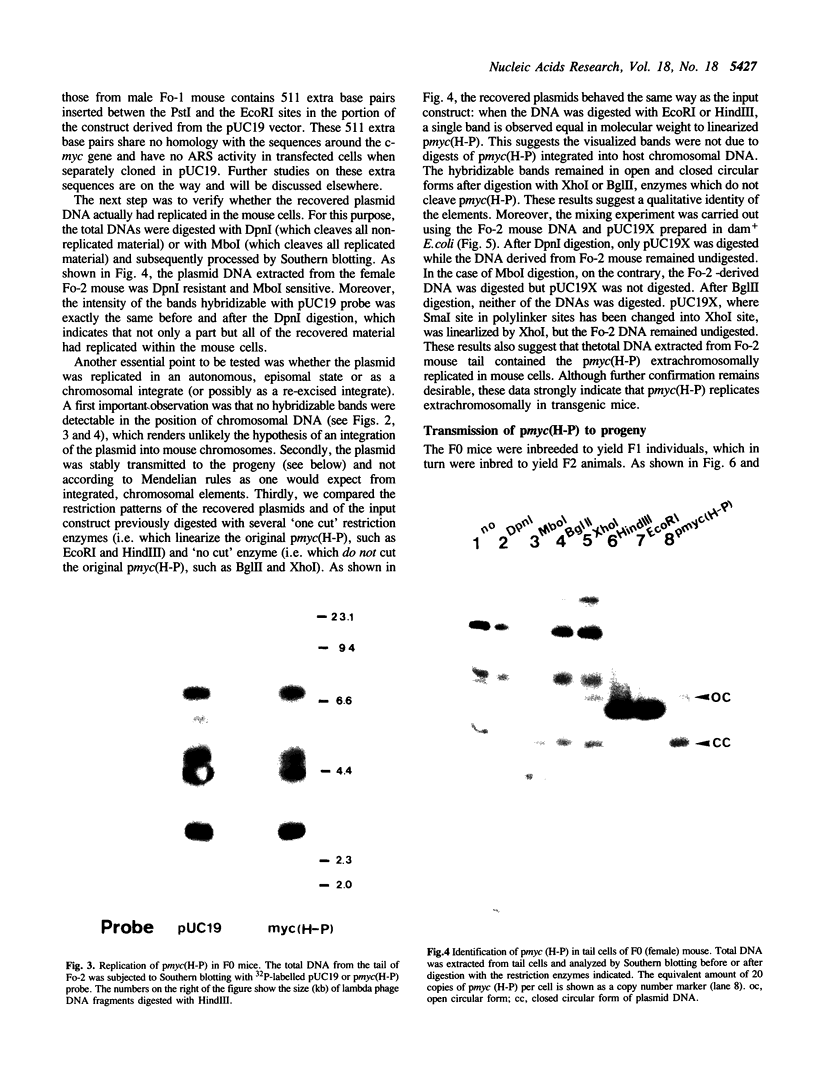
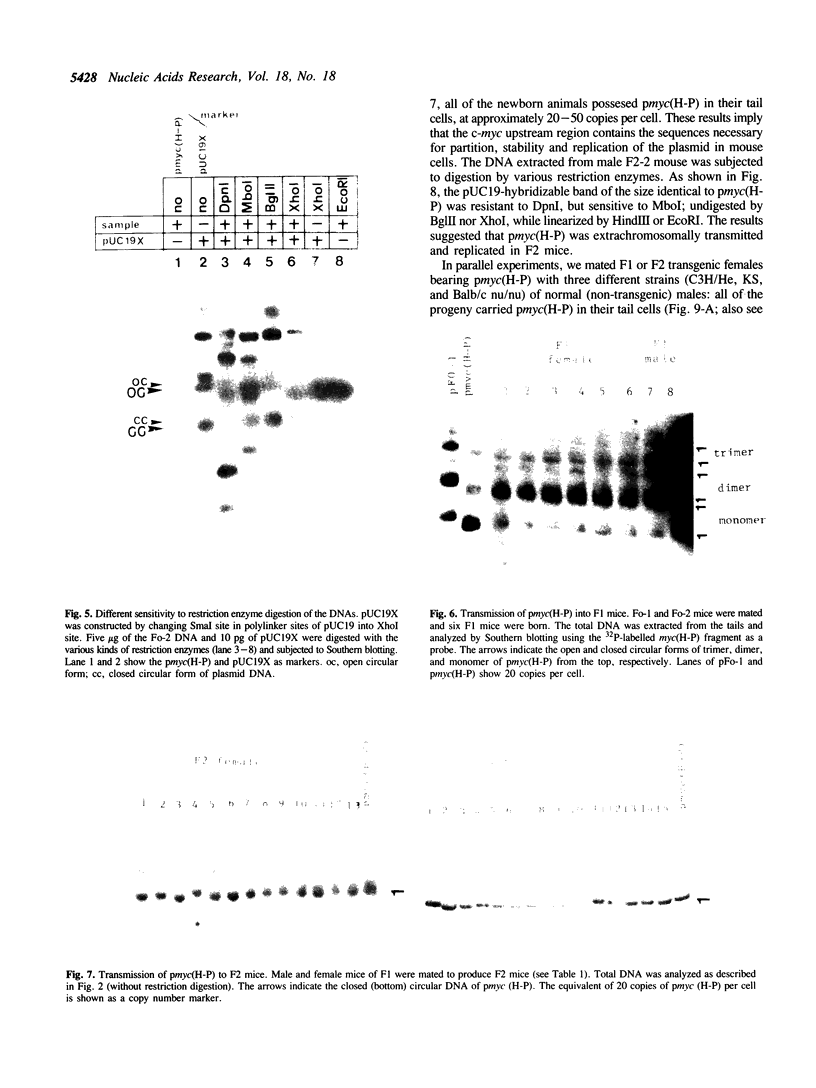
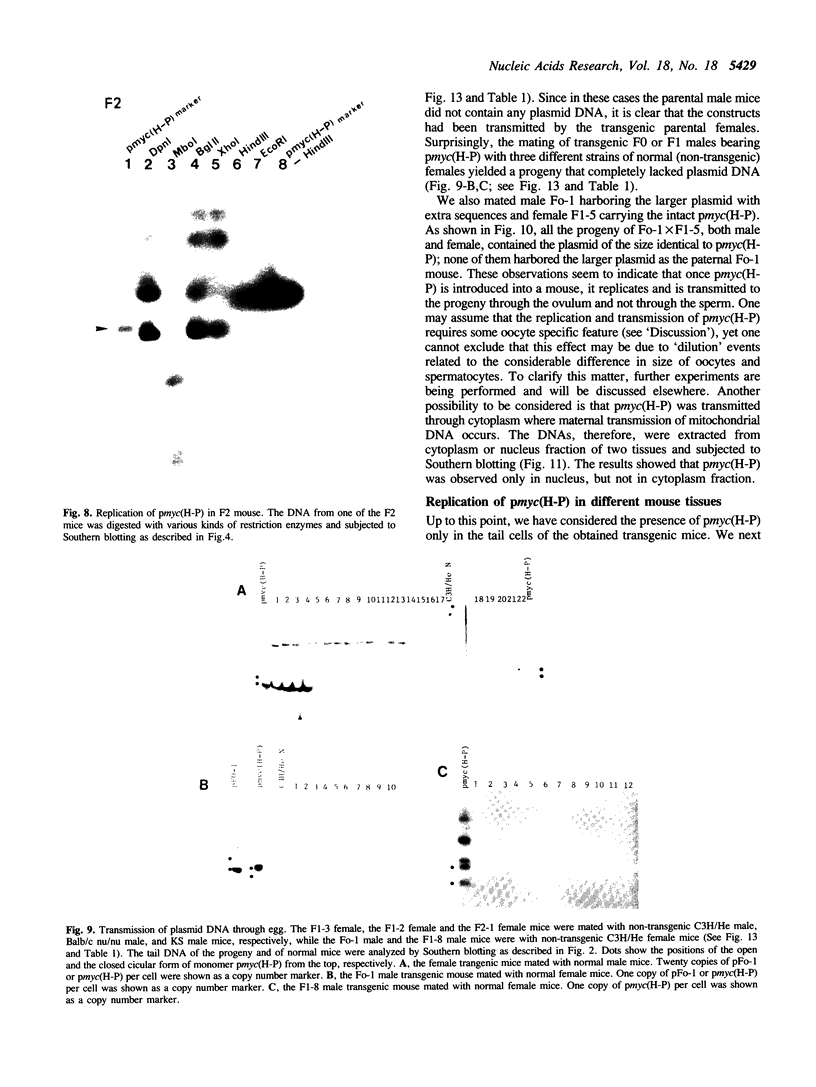
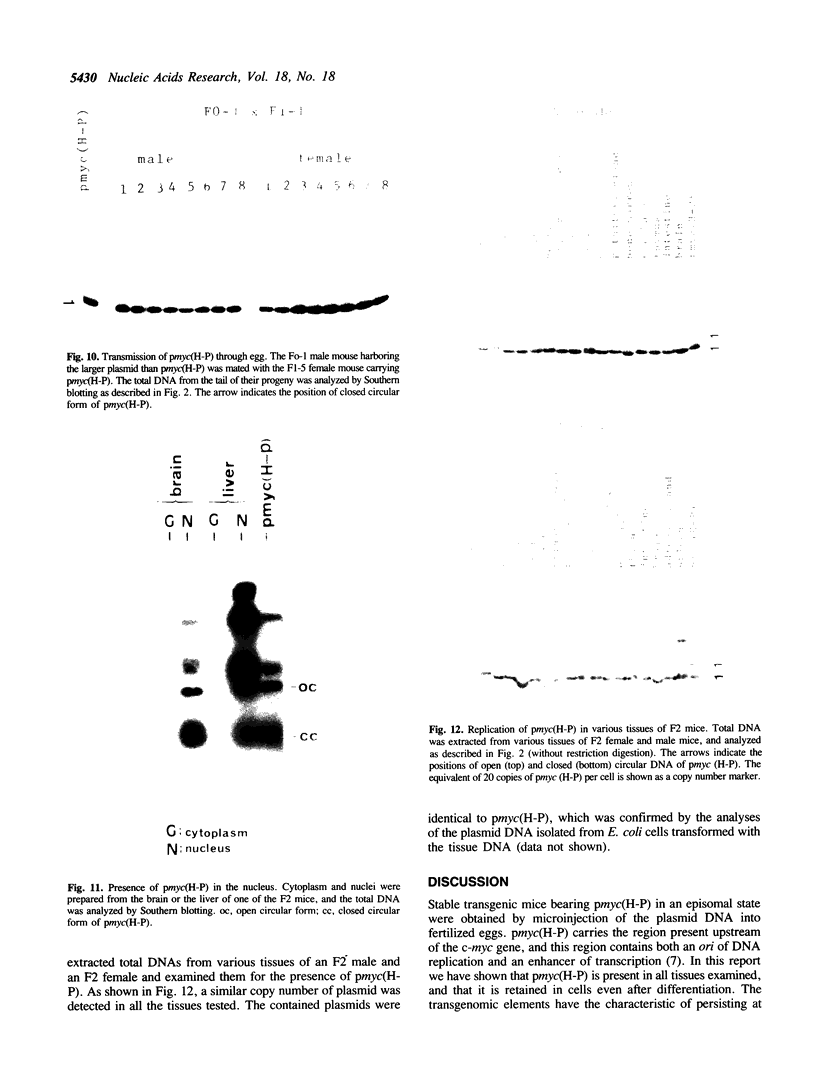
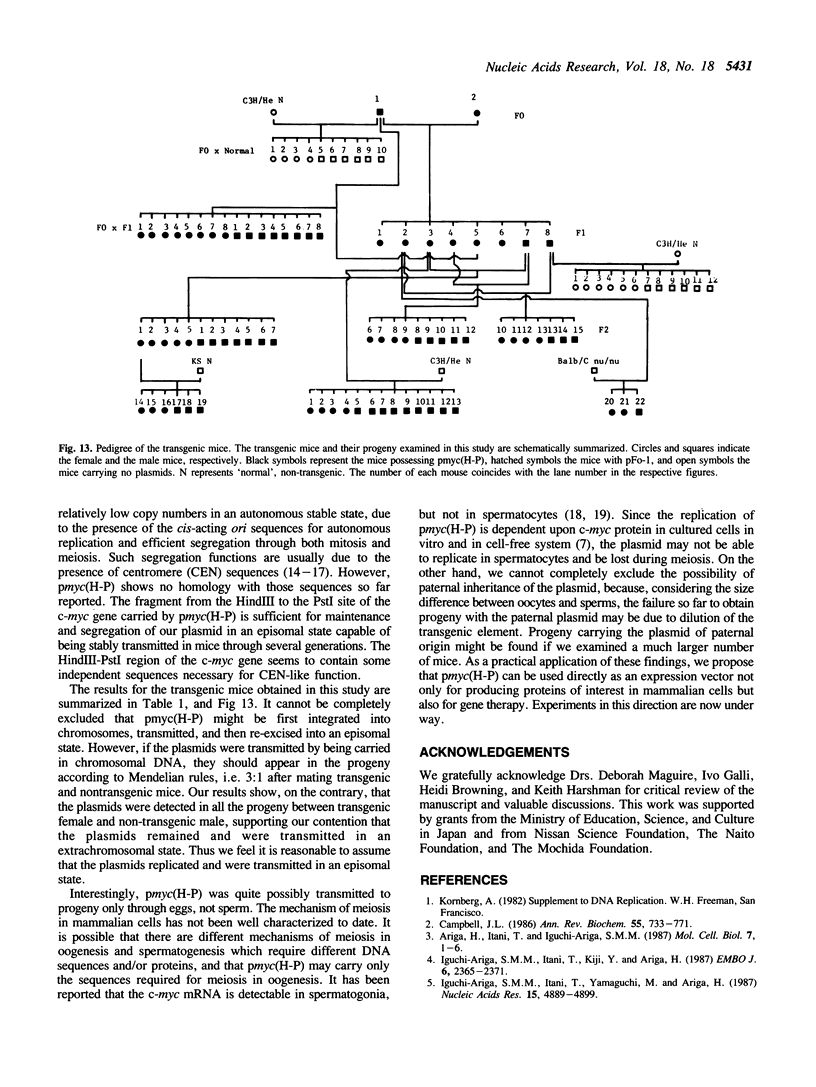
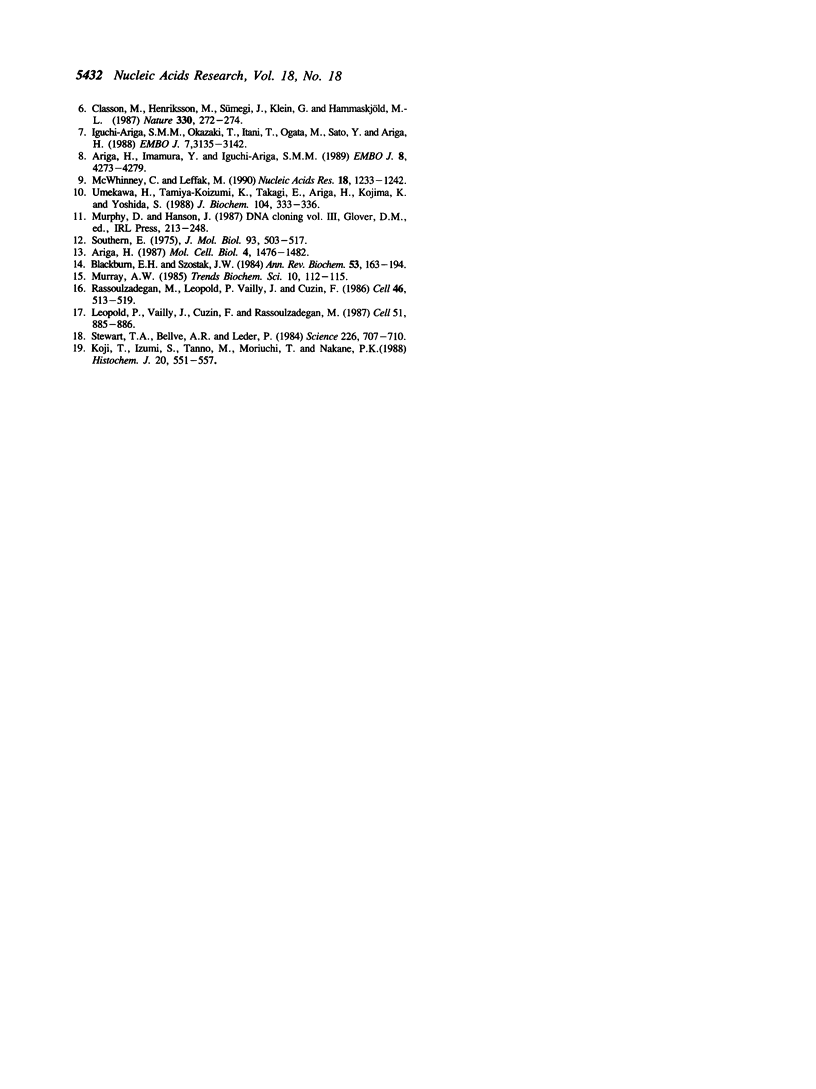
Images in this article
Selected References
These references are in PubMed. This may not be the complete list of references from this article.
- Ariga H., Imamura Y., Iguchi-Ariga S. M. DNA replication origin and transcriptional enhancer in c-myc gene share the c-myc protein binding sequences. EMBO J. 1989 Dec 20;8(13):4273–4279. doi: 10.1002/j.1460-2075.1989.tb08613.x. [DOI] [PMC free article] [PubMed] [Google Scholar]
- Ariga H., Itani T., Iguchi-Ariga S. M. Autonomous replicating sequences from mouse cells which can replicate in mouse cells in vivo and in vitro. Mol Cell Biol. 1987 Jan;7(1):1–6. doi: 10.1128/mcb.7.1.1. [DOI] [PMC free article] [PubMed] [Google Scholar]
- Ariga H. Replication of cloned DNA containing the Alu family sequence during cell extract-promoting simian virus 40 DNA synthesis. Mol Cell Biol. 1984 Aug;4(8):1476–1482. doi: 10.1128/mcb.4.8.1476. [DOI] [PMC free article] [PubMed] [Google Scholar]
- Campbell J. L. Eukaryotic DNA replication. Annu Rev Biochem. 1986;55:733–771. doi: 10.1146/annurev.bi.55.070186.003505. [DOI] [PubMed] [Google Scholar]
- Classon M., Henriksson M., Sümegi J., Klein G., Hammarskjöld M. L., Hammaskjöld M. L. Elevated c-myc expression facilitates the replication of SV40 DNA in human lymphoma cells. Nature. 1987 Nov 19;330(6145):272–274. doi: 10.1038/330272a0. [DOI] [PubMed] [Google Scholar]
- Iguchi-Ariga S. M., Itani T., Kiji Y., Ariga H. Possible function of the c-myc product: promotion of cellular DNA replication. EMBO J. 1987 Aug;6(8):2365–2371. doi: 10.1002/j.1460-2075.1987.tb02513.x. [DOI] [PMC free article] [PubMed] [Google Scholar]
- Iguchi-Ariga S. M., Itani T., Yamaguchi M., Ariga H. c-myc protein can be substituted for SV40 T antigen in SV40 DNA replication. Nucleic Acids Res. 1987 Jun 25;15(12):4889–4899. doi: 10.1093/nar/15.12.4889. [DOI] [PMC free article] [PubMed] [Google Scholar]
- Iguchi-Ariga S. M., Okazaki T., Itani T., Ogata M., Sato Y., Ariga H. An initiation site of DNA replication with transcriptional enhancer activity present upstream of the c-myc gene. EMBO J. 1988 Oct;7(10):3135–3142. doi: 10.1002/j.1460-2075.1988.tb03180.x. [DOI] [PMC free article] [PubMed] [Google Scholar]
- Koji T., Izumi S., Tanno M., Moriuchi T., Nakane P. K. Localization in situ of c-myc mRNA and c-myc protein in adult mouse testis. Histochem J. 1988 Oct;20(10):551–557. doi: 10.1007/BF01002609. [DOI] [PubMed] [Google Scholar]
- Léopold P., Vailly J., Cuzin F., Rassoulzadegan M. Germ line maintenance of plasmids in transgenic mice. Cell. 1987 Dec 24;51(6):885–886. doi: 10.1016/0092-8674(87)90575-7. [DOI] [PubMed] [Google Scholar]
- McWhinney C., Leffak M. Autonomous replication of a DNA fragment containing the chromosomal replication origin of the human c-myc gene. Nucleic Acids Res. 1990 Mar 11;18(5):1233–1242. doi: 10.1093/nar/18.5.1233. [DOI] [PMC free article] [PubMed] [Google Scholar]
- Rassoulzadegan M., Léopold P., Vailly J., Cuzin F. Germ line transmission of autonomous genetic elements in transgenic mouse strains. Cell. 1986 Aug 15;46(4):513–519. doi: 10.1016/0092-8674(86)90876-7. [DOI] [PubMed] [Google Scholar]
- Southern E. M. Detection of specific sequences among DNA fragments separated by gel electrophoresis. J Mol Biol. 1975 Nov 5;98(3):503–517. doi: 10.1016/s0022-2836(75)80083-0. [DOI] [PubMed] [Google Scholar]
- Stewart T. A., Bellvé A. R., Leder P. Transcription and promoter usage of the myc gene in normal somatic and spermatogenic cells. Science. 1984 Nov 9;226(4675):707–710. doi: 10.1126/science.6494906. [DOI] [PubMed] [Google Scholar]
- Umekawa H., Tamiya-Koizumi K., Takagi E., Ariga H., Kojima K., Yoshida S. Phospholipid modulates in vitro replication of autonomous replicating sequence from human cells. J Biochem. 1988 Sep;104(3):333–336. doi: 10.1093/oxfordjournals.jbchem.a122469. [DOI] [PubMed] [Google Scholar]



